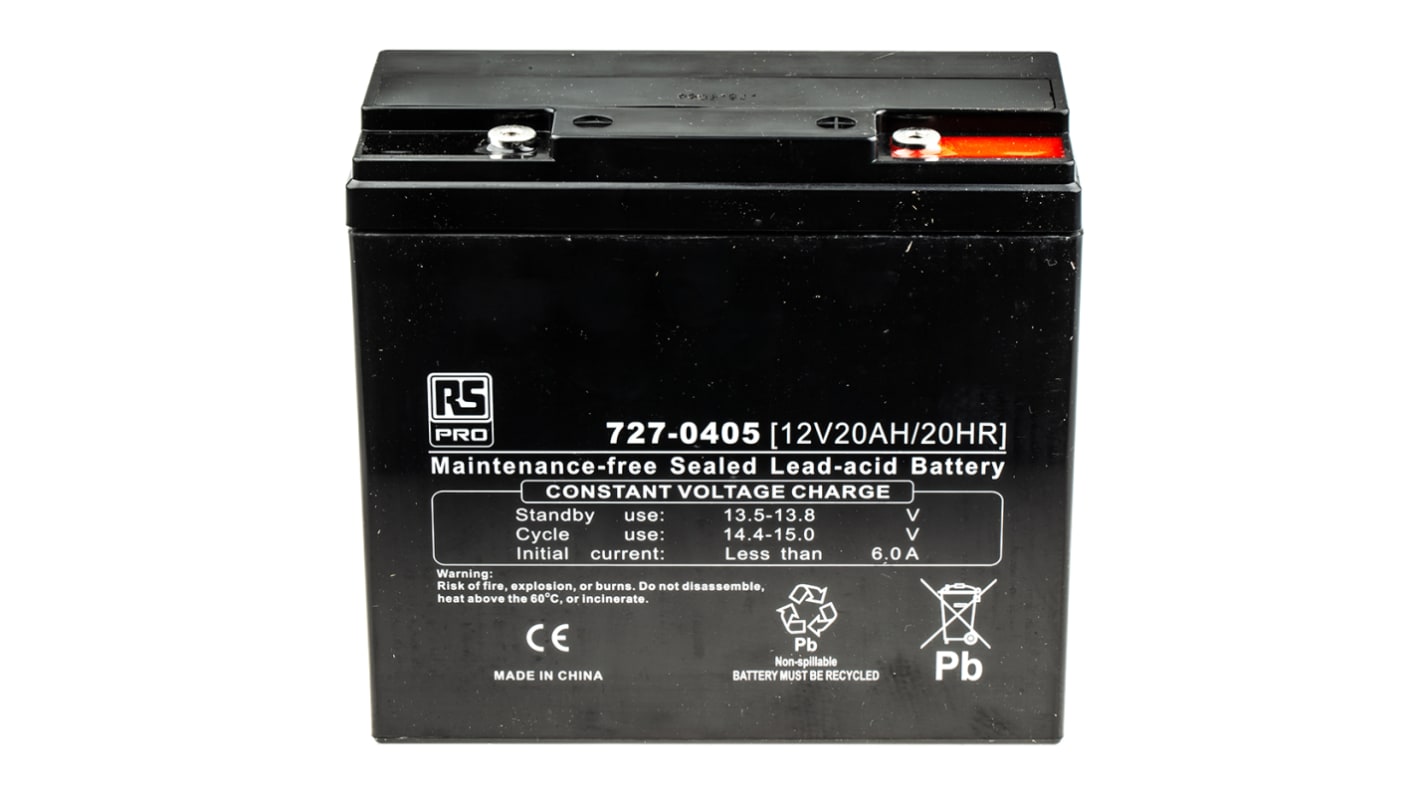RS PRO 12V T12 Sealed Lead Acid Battery, 20Ah
- RS Stock No.:
- 727-0405
- Manufacturer:
- RS PRO
Bulk discount available
Subtotal (1 unit)**
TWD1,227.00
(exc. GST)
TWD1,288.35
(inc. GST)
27 In stock for delivery within 6 working days*
* Delivery dates may change based on your chosen quantity and delivery address.
FREE delivery for orders over TWD1,300.00 (ex VAT)
Real time qty checker
Units | Per unit |
|---|---|
| 1 - 19 | TWD1,227.00 |
| 20 - 99 | TWD1,185.00 |
| 100 + | TWD1,113.00 |
**price indicative
- RS Stock No.:
- 727-0405
- Manufacturer:
- RS PRO

